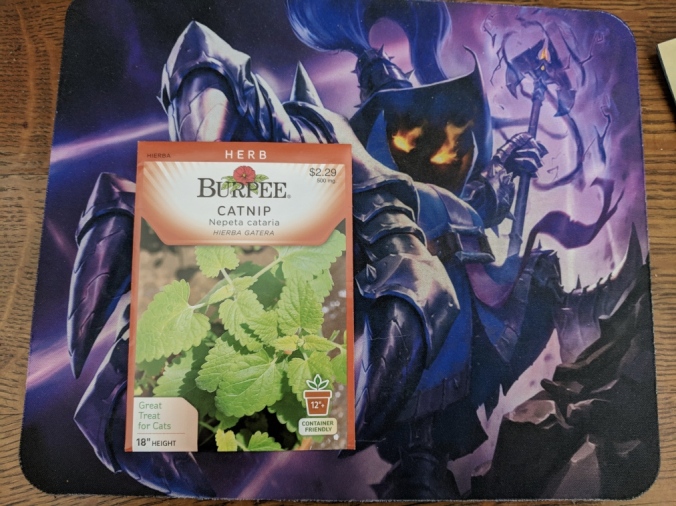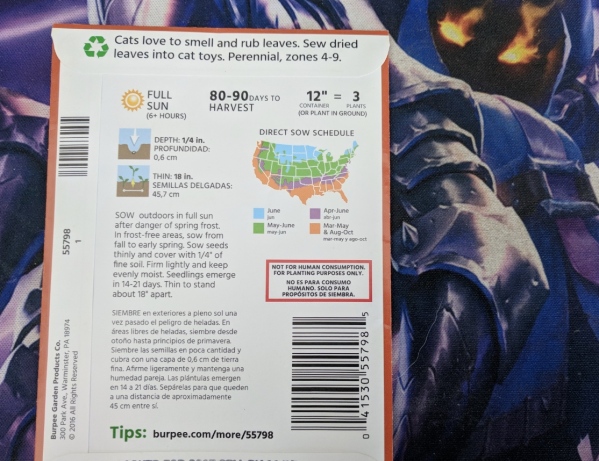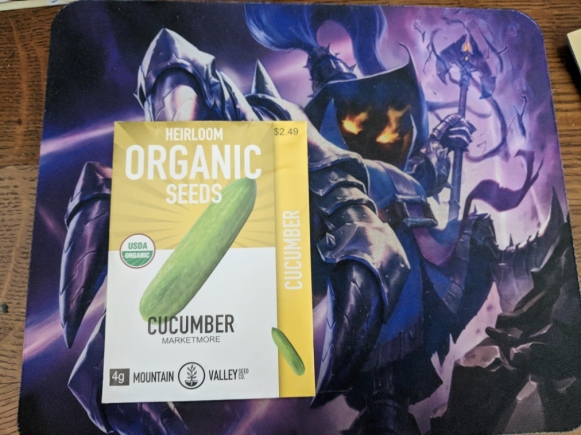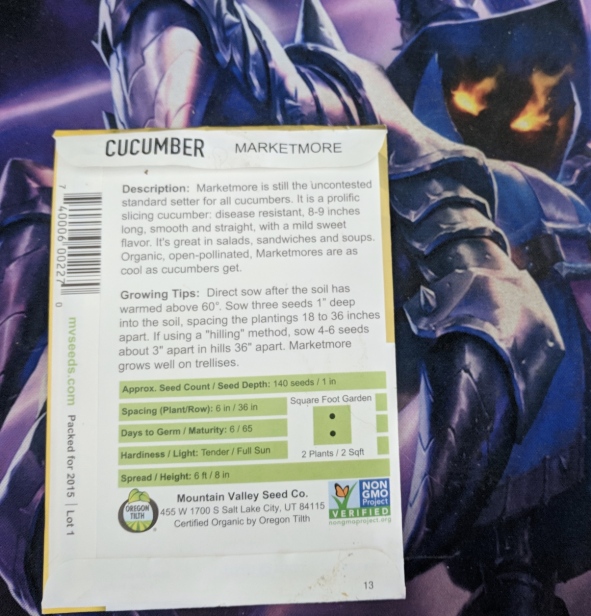When you finally get the itch to start planting, you’ll find that can get your seeds anywhere. You can go through online sources. You can order through seed catalogs. You can go to Costco. You can go to your local hardware store. You can probably go into one of your own kitchen drawers and find some.
The seed quality will vary. The packaging will be different at each place, but, they will almost always have information that you need to know about the seed you hold in your hand.

Even dark mage Yordles take the time to learn what their seed packet can teach.
I had my good friend Veigar find some seed packets from his dark wizard tool shed and he kindly took the time to show me what kind of information they have on the front and back of each packet.
VARIETY– Most packets and descriptions list the name of the variety (technically most are cultivars or cultivated varieties), and tell you if it is a hybrid. Hybrids come about from the crossing of other plant parents, and are often denoted as F1 or F2. This often gives a trait such as bigger flowers or more vigor (not Veigar). It is important to know if you want such traits, or if you want to collect seeds. If you collect seeds from a hybrid, they won’t make the same plants. For this you would need the parent plants (often a seed company trade secret). To collect seeds that will come “true”, you should look for “open pollinated” varieties.

Some packets will have regions color-coded to help you know when you should plant your seed.
TYPE– Flowers also are identified as annuals, biennials, or perennials. Annuals are plants that grow, bloom, and die in one growing season. Biennials bloom the second year after planting and generally die after flowering. Perennials are those plants which come up year after year (if they are hardy). For perennials, many descriptions have or refer to a hardiness zone map so you can see if the plants will have a chance in your area.
DATE–For best results, buy only seed that is packed for the current year. The date is generally stamped on the back flap. Although you might be able to find seeds packaged for last year at a discounted price, these are probably not a good buy. Poor storage conditions will reduce the viability of seeds. If you do want to take a chance on these, sow 10 seeds in moist, rolled paper towel to see how many germinate.

It might not make a difference to you, but seed packets must tell you if your seed is considered “Organic” or not.
GERMINATION–This percentage tells you how many seeds will produce plants under ideal conditions. However, keep in mind that the age of the seeds, how they’ve been stored, as well as how and when you plant them also will affect germination. Some seeds may need exposure to light to germinate. Some perennials may need special seed treatments prior to sowing. If you start seeds indoors in flats under ideal conditions, count on a slightly higher germination rate than if sowing directly outdoors. Descriptions often tell you which is best.
CULTURE– Most seed packets will contain information on how and when to plant, including the number of days to seed germination, and days to harvest for vegetables. Make sure if you see days listed that you know what they refer to—days from sowing to harvest, from planting out to harvest, or other. Packets also will note spacing requirements, height and spread at maturity, thinning instructions, growth habit, and special cultural considerations.

As you can see, it doesn’t really matter which packet you have, you’ll find all sorts of information on your seed type, germination length, maturity length, time until harvest, etc. Just follow the instructions and be patient!
NUMBER OF SEEDS– Be sure to check the weight, or more often number of seeds, to determine how much to buy. Some descriptions provide information on the length of row the packet will plant.
DESCRIPTION—Some parts of the plant description that may be important to you are whether the seeds are organic. If a vegetable, what are characteristics and shape and size and taste of the fruit? Is this variety resistant to diseases? This is especially important for some vegetables such as tomatoes, melons, and squash.
So, there you’ve got a couple good descriptions of what you’ll find on almost any seed packet you find. Don’t be afraid. You pretty much can’t screw it up if you follow the directions, water regularly, and simply have patience.